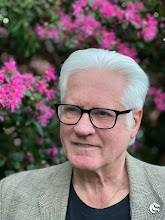Data from the 2011 census will be available in mid-2012. Needless to say, I'll be fascinated to see the new figures.
I have used this historical data from the Yearbook Australia, 2006 (published by the Australian Bureau of Statistics (ABS)) for pre-2006 figures.
For 2006 figures I have used this ABS media fact sheet.
In each case, I provide: the percentage of Anglicans; percentage of Catholics; total percentage of Christians; percentage of believers from non-Christian religions; percentage of "no religion" (atheist, etc.); and percentage who did not reply, refused to reply, or replied in a way that was considered inadequate to count.
There will be various reasons from year to year for the fluctuating "inadequately described" figure, and this will, I imagine, affect some other figures slightly. All the same, we can see some overall trends. Among them, we can see the steady decline of the Anglican Church and a strong rise in the "no religion" category over time. In 2006, these two categories were equal. We also see a very gradual rise in the "other religion" category.
1901
- ANGLICAN .......... 39.7
- CATHOLIC ........... 22.7
TOTAL XIAN .......... 96.1
OTHER REL. ............ 1.4
NO RELIG/N ............ 0.4
INAD DESCR ............ 2.0
===============
1996
- ANGLICAN .......... 22.0
- CATHOLIC ........... 27.0
TOTAL XIAN .......... 70.9
OTHER REL. ............ 3.5
NO RELIG/N .......... 16.6
INAD DESCR ............ 9.0
===============
2001
- ANGLICAN .......... 20.7
- CATHOLIC ........... 26.6
TOTAL XIAN .......... 68.0
OTHER REL. ............ 4.9
NO RELIG/N .......... 15.5
INAD DESCR .......... 11.7
===============
2006
- ANGLICAN .......... 18.7
- CATHOLIC ........... 25.8
TOTAL XIAN .......... 63.9
OTHER REL. ............ 5.6
NO RELIG/N .......... 18.7
INAD DESCR .......... 11.9

7 comments:
I am so eager to see the most recent census data. I have a feeling in my bones that they'll make secular Australians very, very pleased. And we can all trust my bones. ;)
You should point out that 2001 was the year 70000 persons described themselves as Jedi. I guess they appear as INADEQUATE.
Yes, that was the sort of thing I had in mind about that "inadequate" group - though I didn't know the details on the Jedi stuff.
Yes, the number of Christians are declining in Australian, however "Inadequately described" does NOT mean its an atheists bloc. Also, "No religion" could also include agnostics.
Sure. No one is saying that "no religion" is entirely made up of atheists or that the "inadequately described" group consists of atheists. I'm not sure why you're making those points when they are pretty obvious, and nothing in the original post suggests to the contrary, but fine.
Hi Russell
This report - http://www.cra.org.au/Pointers20-2.pdf - from Philip Hughes in 2010 is worth reading for a likely more reliable reflection than the census of recent trends in the religion/no religion groups.
It is interesting to look at some of the recent figures - especially the data that Hughes uses - in light of the results from the European Social Survey that David Voas reports here - http://esr.oxfordjournals.org/content/25/2/155.full The trends in Australia look very similar to those Voas finds in Western Europe.
More interestingly, if we map Australian trends onto the predictions that Voas draws from his data (which I don't think is too long a bow), it seems as if Australia is at a point where the rate of increase in the 'no religion' group is beginning a period of acceleration.
If there are, in fact, strong similarities between the Australian and European situation, Voas is also worth reading on the demography of 'nominal' or ‘fuzzy’ christians. This is the group that declines as the 'no religion' increase. Marion Maddox discusses the socially conservative political influence of this group in Australia here - http://www.abc.net.au/religion/articles/2011/11/10/3360973.htm I think Madox is convincing that it is this group that politicians have in their sights with Christian friendly policies. Madox’s book ‘God under Howard’ gives much of the additional background to this contention.
I wonder, as I said in a comment on Madox's article, whether we are starting to see a decline in the political influence of the nominals in Australia (as Voas might predict) - Labor policy on same sex marriage, the introduction of ethics classes and secular 'chaplains', for instance. This may be too long a bow, though.
It's interesting in the face of this decline that so few Australian politicians are willing to come out as atheists. I suspect, in fact, that the motives which drive people into politics are similar to the motives which drive people to join or stay in a religion -- roughly speaking, a belief in the power and importance of communal activity -- and if this is so we can expect to see the proportion of theists in government remaining higher than the proportion in the electorate for some time.
Post a Comment